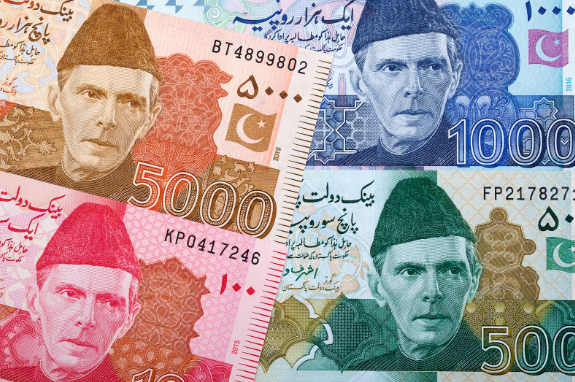
Pakistan’s external debt obligations are ballooning as the PKR depreciates; its FOREX reserves are dwindling as the trade deficit widens
Firms should plan and prepare for a worst-case scenario where the Pakistan government is unable to pay for basic necessities and imports, or service its debts, causing widespread economic chaos and social unrest. Firms should also expect severe inflationary pressures to deplete consumer demand for nearly all products except essentials. Companies that serve government projects should expect these projects to either be indefinitely delayed or shelved for an extended period as the government looks to cut all nonessential spending. Finally, as the global and domestic economic situations change rapidly, firms should prepare for the Pakistan government to announce ad hoc policy changes, particularly relating to taxes and subsidies, which will significantly alter companies’ cost calculations.
Overview
Pakistan is facing crises on multiple fronts:
• Widening current account deficit: Pakistan has a current account deficit, meaning it spends more on goods and services than it makes. Its deficit rose by close to 50% between July–March 2021 and the same period in 2022. In addition, this figure does not fully account for the broad-based surge in commodity prices, which will widen the deficit further.
• Large fiscal deficit: Pakistan’s fiscal deficit for FY 2021–2022 (July 2021–June 2022) is estimated at 8% of GDP, close to levels seen in 2019, when the government was forced to seek an IMF bailout of US$ 6 billion.
• Depreciating currency: The Pakistan rupee (PKR) has depreciated by 12% since the start of the year to an all-time low value of 196.5 PKR:USD as of May 17 as a result of the widening current account deficit and worsening investor sentiment, resulting in capital outflows.
• Soaring inflation: Rising global commodity prices and a rapidly weakening currency have driven up inflation, which hit a two-year high in April, at 13.4%. Inflation is set to rise even further through most of 2022.
• Political instability: Pakistan ousted its prime minister just last month (read our analysis here) due to economic mismanagement. There is a risk that if the new government takes steps that are economically necessary but politically unpopular, it may be met with the same fate.
• Uncertain fate of the IMF bailout: The IMF has yet to decide whether to release the final US$ 1 billion tranche (out of a total of US$ 6 billion) to Pakistan’s government. The decision will be based on important austerity measures that the government has shied away from implementing so far.
Our View
Pakistan’s economic situation will get worse in the near term, as the underlying drivers of the situation—soaring inflation and ballooning twin deficits—worsen. The next few days will be crucial for the country, as the government meets with the IMF in Doha to discuss the terms of the final tranche of the economic bailout. However, the government is in a tough situation, where it will likely need to choose between implementing austerity measures, which will fuel inflation, and forgoing the IMF bailout, which will result in the government defaulting on its payments and debt obligations. While there is still a possibility that Pakistan receives an influx of funds from its foreign allies, namely China, Saudi Arabia, and the United Arab Emirates, some of them have already indicated that the nature of support to Pakistan this time is likely to be limited. We expect that the likelihood that Pakistan will be able to avoid a debt crisis without introducing austerity measures this year is low.
At FrontierView, our mission is to help our clients grow and win in their most important markets. We are excited to share that FiscalNote, a leading technology provider of global policy and market intelligence has acquired FrontierView. We will continue to cover issues and topics driving growth in your business, while fully leveraging FiscalNote’s portfolio within the global risk, ESG, and geopolitical advisory product suite.
Subscribe to our weekly newsletter The Lens published by our Global Economics and Scenarios team which highlights high-impact developments and trends for business professionals. For full access to our offerings, start your free trial today and download our complimentary mobile app, available on iOS and Android.

